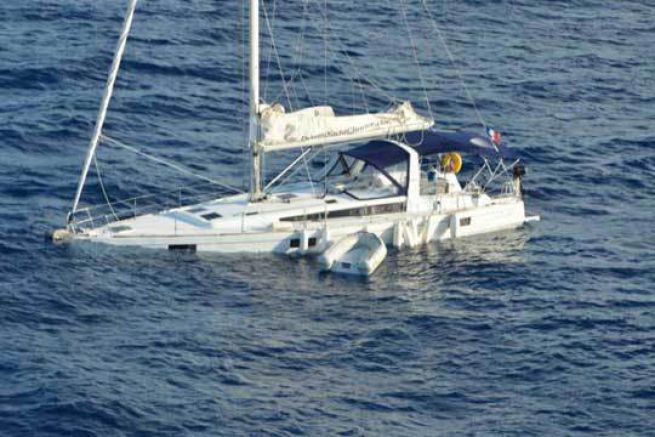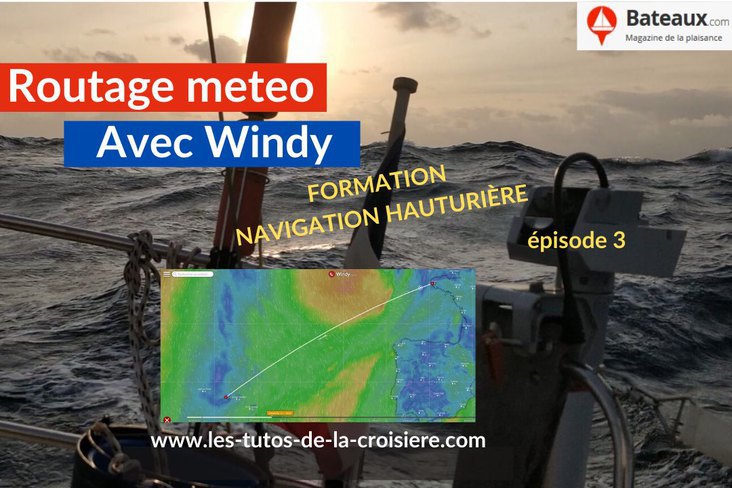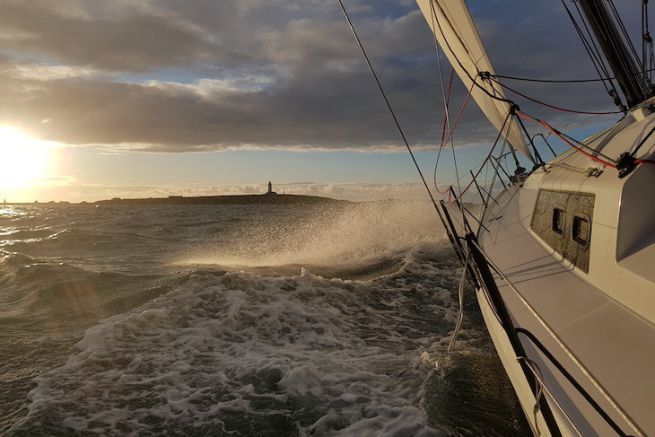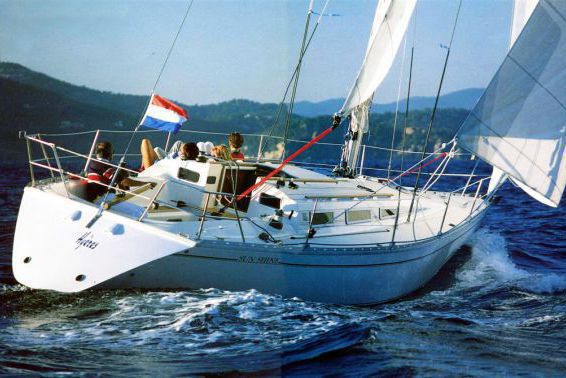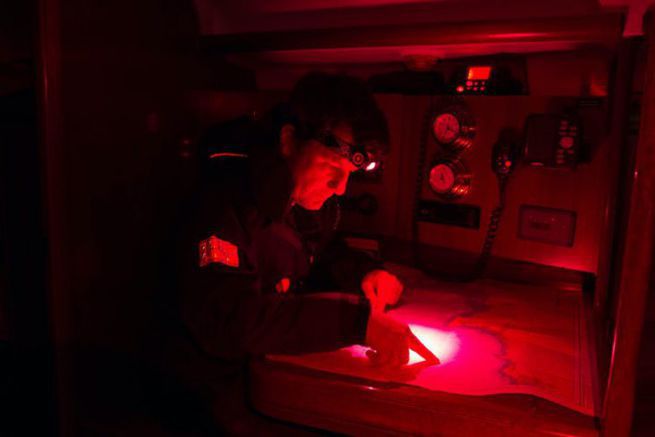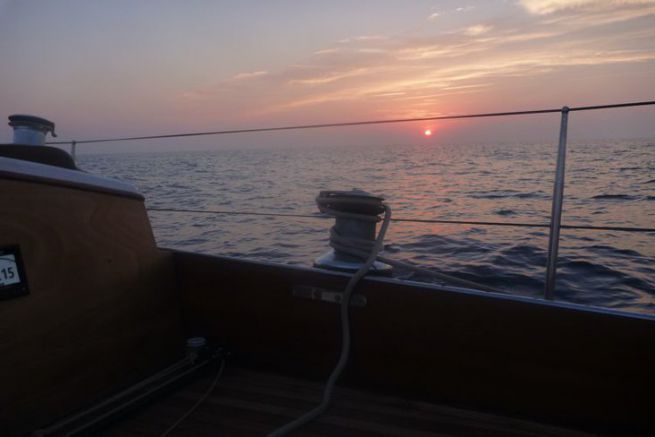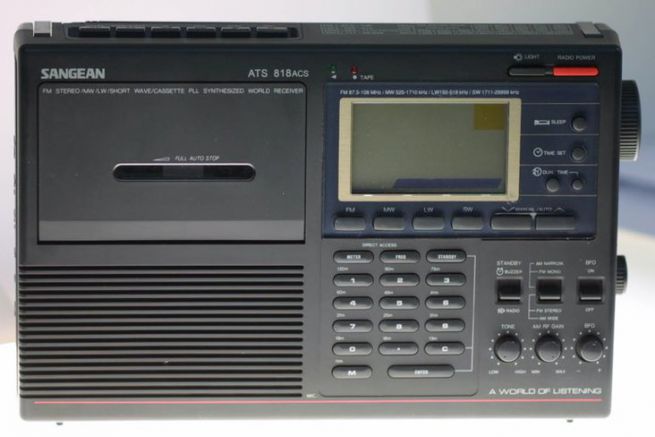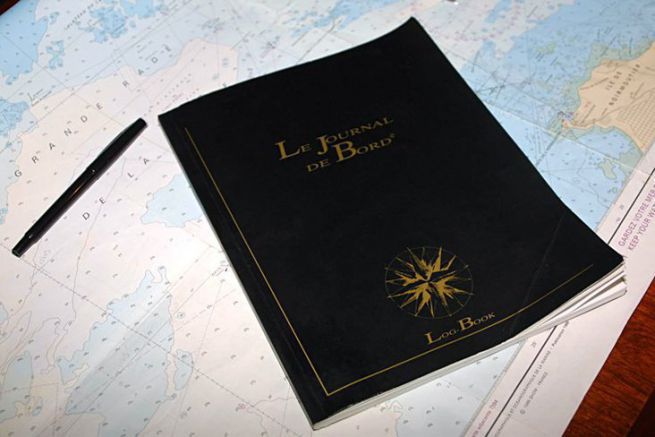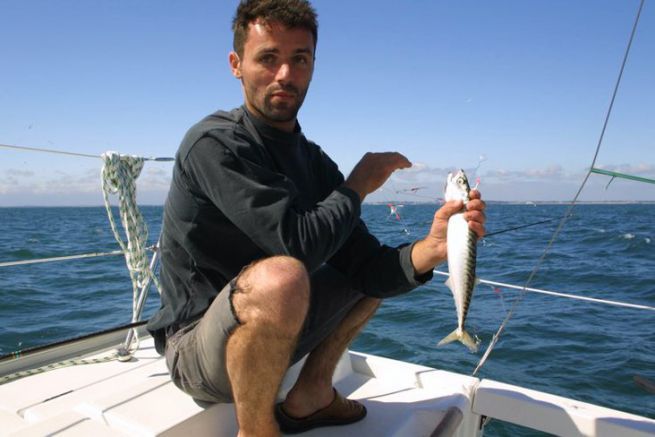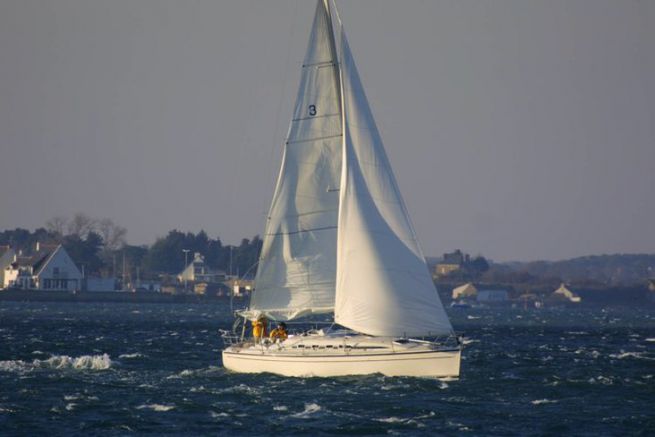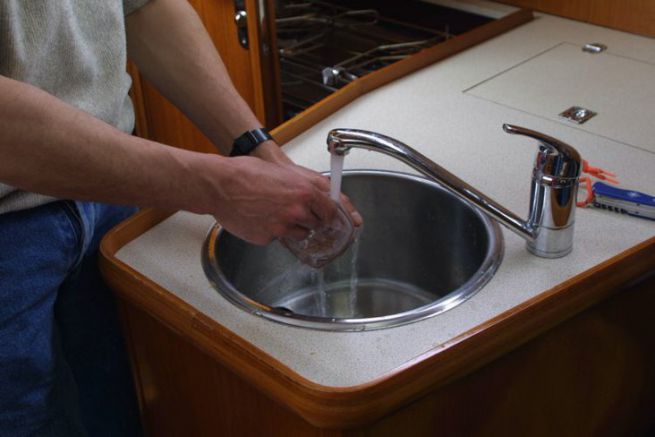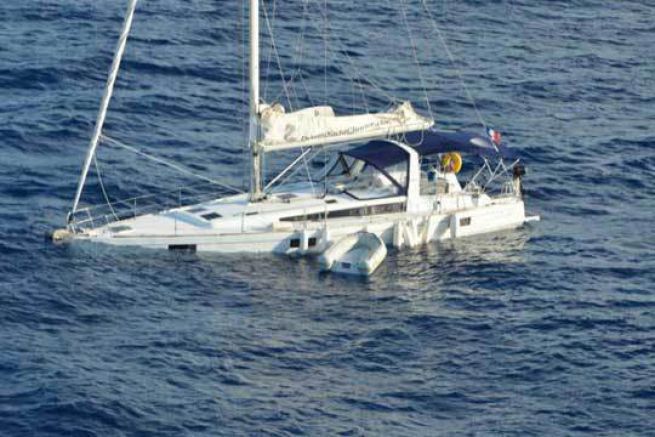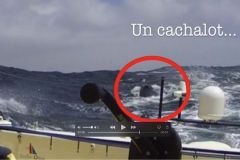While approaching the Azores in the middle of the night, our sailboat Suhaili hit an Unidentified Floating Object (UFO) at full speed. The impact was quite violent and the crew was very frightened. In the video at the bottom of this article you will learn how they handled this event. Suhaili is unfortunately not the only boat to have encountered a UFO. In reality sailboats and to a lesser extent fishermen, are very exposed to this danger.
Where do UFOs come from?
There are 2 kinds of UFOs:
- marine animals, including whales
- objects resulting from human activity
These are numerous:
- lost containers
- logs
- pallets
- fridges
- submarines
- scientific beacons
- various wrecks.
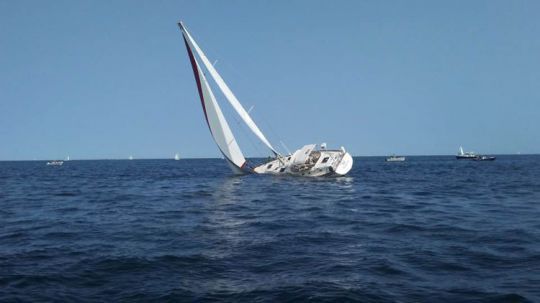
Who is affected by this danger?
Modern racing yachts are increasingly confronted with these accidents. Very fast, equipped with deep and numerous appendages (keels, daggerboards, foils), they literally plough the sea and collect everything in their path between the surface and 3 metres deep. In case of impact, the lever arm is considerable, not to mention the energy provided by the speed of these cars. You only have to look at the reasons for retiring from the last two Vendée Globe races to get an idea of the problem.
Cruise ships are also victims of UFOs. They are probably better off at slower speeds, but every year there are collisions that sometimes lead directly to shipwreck. These accidents occur both near the coast and offshore.
Finally, small fishing vessels, which are less robust than cargo ships and factory ships, also regularly suffer from this pollution.
An ecological challenge
Marine animals, especially whales, pay a heavy price for our maritime activities. See in the video this freighter bringing one of them back to shore, stranded on its bulb. The captain didn't realize it until the ship docked... We can also imagine the terrible injuries caused by the foils and sharpened rudders of Ultimate launched at 40 knots.
As for the containers, the figures vary strangely, but they are between 2500 and 10000 fallen boxes or voluntarily thrown into the water (during storms) each year. Do fish also make their orders at Aliexpress? As they don't sink right away, these blocks of steel floating between two waters are comparable to drifting reefs, but without beacons.
How do you spot them?
For the moment there is no reliable technology capable of signalling the presence of UFOs with precision and, above all, early enough to give us time to react. Thermal cameras are being developed for racing and expedition boats, but are offered from 20,000 euros upwards. In addition, they are not capable of detecting objects floating below the surface.
Forward looking sonar is often mentioned, but unlike thermal imaging cameras it will not detect objects too close to the surface and will at best only warn you 10 seconds before impact when sailing at 8 knots.
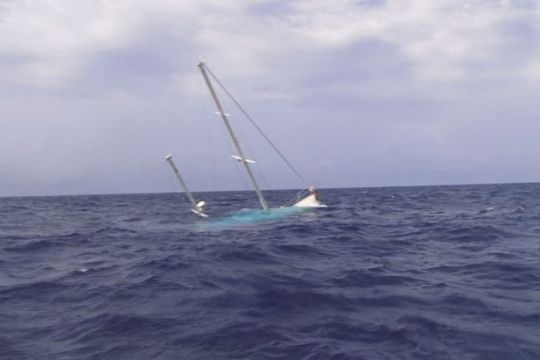
Preventive measures
An interesting solution, to prevent frontal shocks, is to install crash boxes at the front of your sailboat. This can be done by isolating the chain well from the rest of the boat. It is also possible to seal off part of the forward tip boxes.
The shell material, however, will not guarantee against venting. Many aluminium yachts have had bitter experience of this. Just think of the steel hull of the Titanic.
The installation of powerful bilge pumps combined with sufficient power sources can, however, save your life. Also think about repair materials that can cure underwater: special resins, polyurethane sealant, etc.
Finally you can choose to an unsinkable sailboat (Catamarans, Etap, Pogo...). If it fills up with water, it should not sink and you should always be safer there than on a raft waiting for help. But if you want to give yourself a chance to save it, do not dispense with the measures proposed here.
What to do in the event of a collision?
In the event of a collision, the primary challenge is to contain the rising water with the bilge pumps. If you manage to do this, you will have a chance to return to port or seal the leak with makeshift means. If the water still rises, you will have to evacuate your ship. Alert the emergency services, inflate the raft and keep it close to the sailboat until it has not sunk. Do everything you can to make it easier for the emergency services to find you (rockets, bright colours, portable VHF, smoke, mirror...).
Don't let that stop you from sailing. But a skilled sailor is worth two. A consumer, too, for that matter, when it comes to containers..
